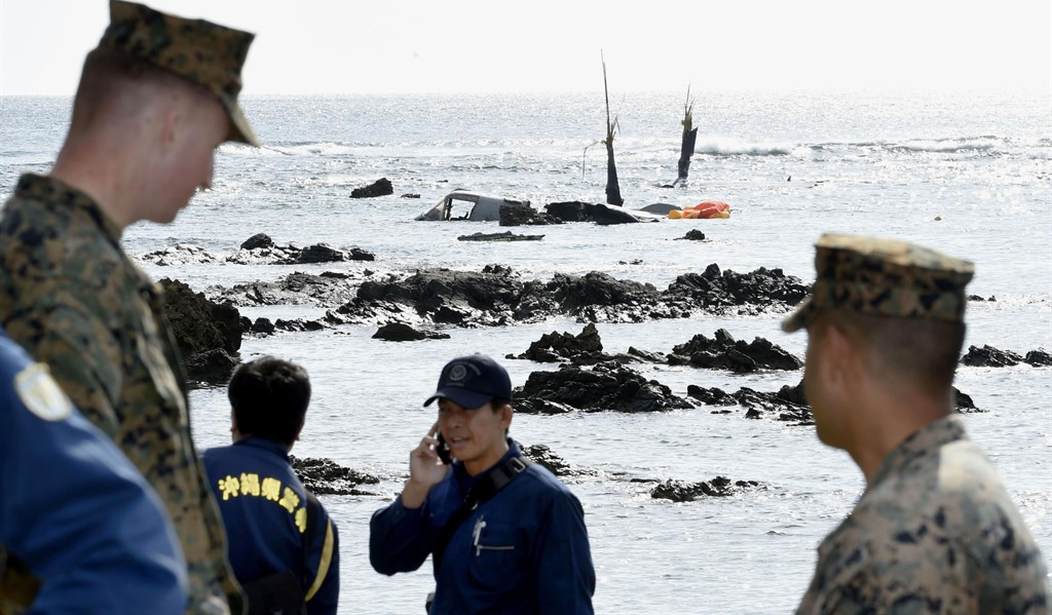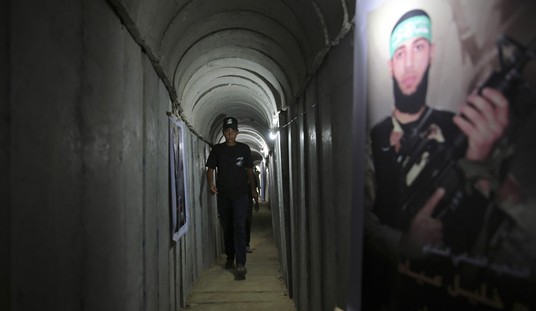The US military has grounded its entire fleet of approximately 450 V-22 Osprey tiltrotor aircraft after a crash off Japan last week killed eight members of the US Air Force Special Operations Command. Naval Air Systems Command released a statement, "Preliminary investigation indicates a potential materiel failure caused the mishap, but the underlying cause of the failure is unknown at this time." Six of the dead airmen have been recovered from the wreckage.
On Friday, during his daily morning press conference, Japan’s Chief Cabinet Secretary Hirokazu Matsuno stated that, despite requests by the Japanese government, there has not been sufficient explanation by the United States regarding the safety of the Osprey helicopters and flight operations. “We have concerns about what is going on,” Matsuno stated.
Matsuno reiterated that the Japanese government had sent an official notification to the U.S. government asking to halt Osprey flights in Japan save for search-and-rescue (SAR) operations until the U.S. can confirm the safety of the aircraft.
The Osprey is a revolutionary aircraft that promised to make maritime operations dominant, as about two-thirds of the world's population lies within the combat range of the V-22. Along with the promise came adversity. Mechanical failures and engineering challenges plagued the aircraft during development. After fielding, it has acquired the reputation, deservedly or not, of a somewhat dangerous aircraft to operate. Part of that perception is because when an Osprey crashes, there seem to be fatalities. For instance, when an Osprey crashed during testing in 2000, 19 Marines were killed. Since 2007, when the V-22 became fully operational, there have been 12 crashes and 33 fatalities.
Statistically, the V-22's safety record, absent the body count, is fairly similar to the USMC standard.
The website of the U.S. Marine Corps in Okinawa introducing the MV-22 Osprey states that “The MV-22 is safe: it has a Class A mishap rate of 3.27 per 100,000 flight hours since FY2010, on par with other Marine Corps aviation platforms.”
In addition, according to an accident report published in July 2023 after an MV-22 crashed into the California desert in June 2022, killing five crew members, the 10-year average mishap rate for the MV-22 is 3.16 per 100,000 flight hours. This is indeed on par with the USMC aviation mishap average of 3.1, which includes aircraft such as the AV-8B, F/A-18A-C, F-35B, CH-53E, and KC-130J. This also means that the MV-22 doesn’t have a safety record that is better than USMC averages.
Regardless of the stats, the V-22 has had a run of bad luck recently.
Last week’s accident, in waters off the small southern Japanese island of Yakushima, was the latest in a series of fatal crashes for the aircraft, including one just three months prior in Australia that killed three American Marines during a training exercise...
Last year, nine Marines were killed in two crashes. One Osprey crashed in June during a training mission near Glamis, Calif., killing five. Another crashed in a valley in Beiarn, Norway, killing all four on board...
The New York Times is stealth-linking this crash to the June 8, 2022, V-22 crash at Melville Island, Australia, that killed three Marines.
The Osprey has had issues with “hard clutch engagement,” in which the clutch suddenly slips before re-engaging.
V-22s have gone down for a lot of reasons, so one has to assume the NYT has some reason to highlight this particular problem. The "hard clutch engagement" was an issue known to the USAF. The Air Force Special Operations Command grounded their Osprey fleet in August 2022 and cleared them to fly again two weeks later after replacing all the clutches.
If the NYT is correct, then hard questions need to be asked about the accident investigations and the fix taken.
Unlike many "safety stand-downs" that are political, butt-covering eyewash, this one makes sense. A quick scan of crash summaries shows that mechanical flaws that bring down one V-22 are usually endemic to the entire fleet...they just haven't had time to fail catastrophically.














Join the conversation as a VIP Member